TMOs revert to 2013 protocols
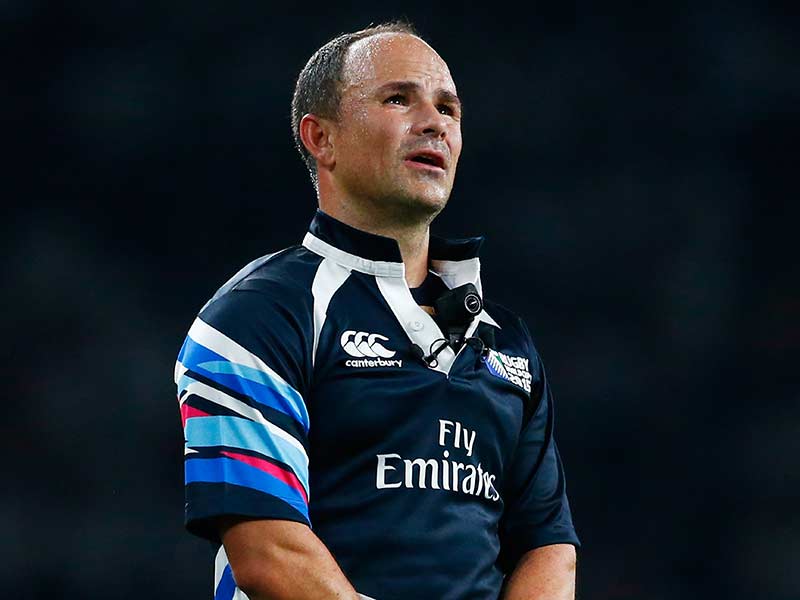 This means that in Super Rugby and Currie Cup the TMO is allowed to be consulted for just two things – the act of scoring a try and foul play.
This means that in Super Rugby and Currie Cup the TMO is allowed to be consulted for just two things – the act of scoring a try and foul play.
Things like knock-ons and forward passes in the last two phases when a potential try is results is OUT. The referee and his two helpers have to deal with that in real time as in the pre-TMO past – seeing and accepting what they see, reacting to the clear and obvious.
The act of scoring a try means the grounding and how it happened.
- If there is doubt about who first grounded the ball, that is a case for the TMO.
- If there is doubt about whether the potential try scorer properly grounded the ball, that is a case for the TMO.
- Whether the ball-carrier is in touch or touch-in-goal or not, that is a case for the TMO.
- Whether the dead-ball line came into play before the grounding of the ball, is a case for the TMO.
Foul play may be revisited wherever it occurs on the field. And the TMO, like the assistant referees, is allowed to take the initiative in suggesting to the referee that foul play has occurred. If it prevented the scoring of a probable try, a penalty try is awarded.
The laws of rugby football, it seems, cannot exist without exceptions and the exceptions in the matter of consulting the TMO exist in the Varsity Cup.
There are generous bonus points for Varsity Cup tries that start in ones own half or between the half-way and the opponents' 22. If the referee is unsure where the movement started he is allowed to consult the TMO.
Then there are white cards to be used as challenged in the semifinals and the final of the Varsity Cup. That, too, will require the help of the TMO.
It is only for Varsity Cup – not for other Varsity competitions or for any other South African matches. Most rugby in South Africa is in any case not televised and so no TMO is available.
The 2013 Protocol
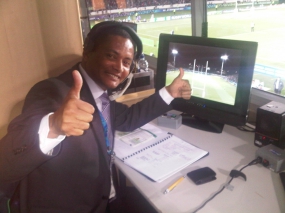 Introduction
Introduction
The current Law 6 provides the opportunity for Match Officials to use the TMO to assist in the adjudication of decisions when the team in possession of the ball has or may have touched the ball down in their opponents' in-goal area and any of the match officials have a view that there was a potential infringement in in-goal. This protocol extends the jurisdiction of the TMO in two ways;
The adjudication of decisions when the team in possession of the ball has touched the ball down in their opponents' in-goal area and any of the match officials have a view that there was a potential infringement in the field of play with limitations.
The review of potential acts of foul play or to assist in the determination of sanctions for foul play.
Protocol Law 6.A.6 Referee Consulting With Others:
(a) The referee may consult with assistant referees about matters relating to their duties, the Law relating to foul play or timekeeping and may request assistance related to other aspects of the referees duties including the adjudication of offside.
(b) A match organiser may appoint an official known as a Television Match Official (TMO) who uses technological devices to clarify situations relating to;
i. When there is doubt as to whether a ball has been grounded in in-goal for a score or a touchdown.
ii. Where there is doubt as to whether a kick at goal has been successful.
iii. Where there is doubt as to whether players were in touch or touch in goal before grounding the ball in in-goal or the ball has been made dead.
iv. Where match officials believe an offence or infringement may have occurred leading to a try or in preventing a try.
v. Reviewing situations where match officials believe foul play may have occurred.
vi. Clarifying sanctions required for acts of foul play.
(c) Any of the match officials including the TMO may recommend a review by the TMO. The reviews will take place in accordance with TMO protocol in place at the time.
(d) A match organiser may appoint a timekeeper who will signify the end of each half.
(e) The referee must not consult with any other persons.
1. Decisions relating to in-goal
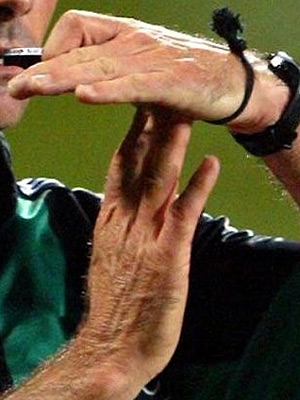 1.1. The TMO may be used when the Referee requires confirmation with regard to the scoring of a try. The TMO may also be consulted as to the success or otherwise of kicks at goal.
1.1. The TMO may be used when the Referee requires confirmation with regard to the scoring of a try. The TMO may also be consulted as to the success or otherwise of kicks at goal.
1.2 The Referee will blow time out and make the “time out” T signal.
1.3 The Referee will make a “square box” signal with his hands and at the same time inform the TMO through the two way communication that he will require his advice.
1.4 The Referee will then ask the TMO one of three questions:
- Is it a try – yes or no?
- Can you give me a reason why I cannot award a try?
- But for the act of foul play – probable try or no try?
1.5 The TMO will then liaise with the TV Director and look at all available footage in order to gather enough information in order to provide informed advice.
1.6 The broadcaster must provide all the angles requested by the TMO.
1.7 When the TMO has concluded his analysis he will provide the match referee with his advice and recommendations. The Referee should repeat the TMO's recommendation to ensure that he is absolutely satisfied that he has heard what has been recommended.
1.8 The TMO will then advise the Referee as to when he may go ahead and signal his decision. (This process is essential in order to allow time for TV to focus their cameras on the Referee for his decision).
1.9 The Referee will then communicate his decision in the correct manner. Play will then continue and the time clock restarted.
1.10 Where large on-ground video screens are available the TV Director may also communicate the decision.
1.11 In the absence of a video screen some grounds may use Red and Green lights to advise the crowd.
1.12 The important and primary method of communication still rests firmly with the Referee who will indicate in the normal way after receiving the TMO's advice.
2. Potential infringement by the defending team preventing a try from being scored.
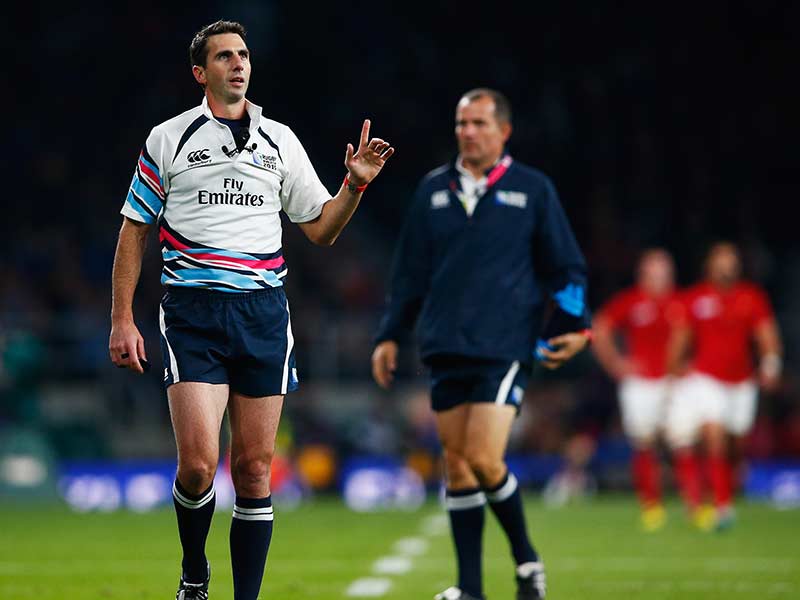 2.1. If the match officials have a view that there was a potential infringement in the field of play by the defending team that may have prevented a try being scored, they may suggest that the referee refers the matter to the TMO for review.
2.1. If the match officials have a view that there was a potential infringement in the field of play by the defending team that may have prevented a try being scored, they may suggest that the referee refers the matter to the TMO for review.
2.2 The potential infringement must have occurred between the last restart of play (set piece, penalty/free-kick, kick-off or restart) and the touch down but not further back in play than two previous rucks and/or mauls.
2.3 If the referee agrees to refer the matter to the TMO he will indicate what the potential offence was and where it took place. The offences will normally be an act of foul play such as obstruction or playing a player without the ball.
2.4 In reviewing the potential offence the TMO must use the criterion on each occasion that the infringement must be clear and obvious and that but for the infringement a try would probably have been scored, if he is to advise the referee to award a penalty try. If there is any doubt that a try would be scored, the TMO must advise the award of an appropriate sanction in accordance with Law.
2.5 The TMO may mention issues viewed in addition to those requested by the referee if it is appropriate to the situation under review.
3. Potential acts of foul play
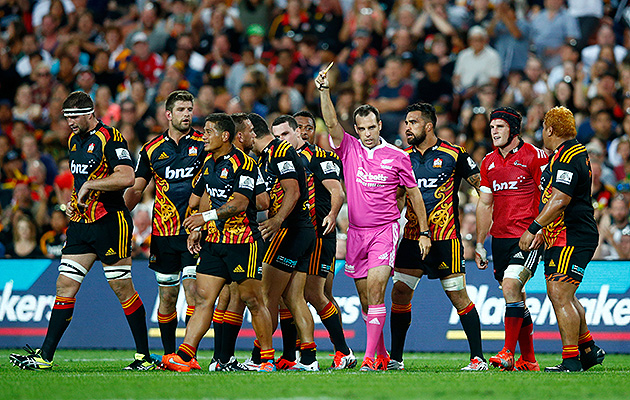 3.1. The match officials may suggest that the referee refers the matter to the TMO for review if they observe an act of foul play where:
3.1. The match officials may suggest that the referee refers the matter to the TMO for review if they observe an act of foul play where:
- They may have only partially observed an act or acts of foul play.
- They are unsure of the exact circumstances.
- The views of the match officials reporting the act(s) of foul play differ.
- There is doubt as to the appropriate sanctions to be applied.
3.2. If the referee agrees to refer the matter to the TMO he will indicate that he wishes the TMO to review the potential act(s) of foul play and to make a recommendation as to the appropriate sanction(s).
3.2. In reviewing the potential offence the TMO must use the criterion on each occasion that the infringement must be clear and obvious especially where sanctions may apply where a player is removed from the field of play either temporarily or permanently.
3.3. The other match officials may utilise the in stadium screens (where available) to form a judgement in this matter.
In accordance with Law 6.A.4, the referee will remain the sole judge of fact and Law during a match.
Pre-match "team of 4" talk must underline the above approach and not include areas of jurisdiction which do not appear in this protocol.
By Paul Dobson



































